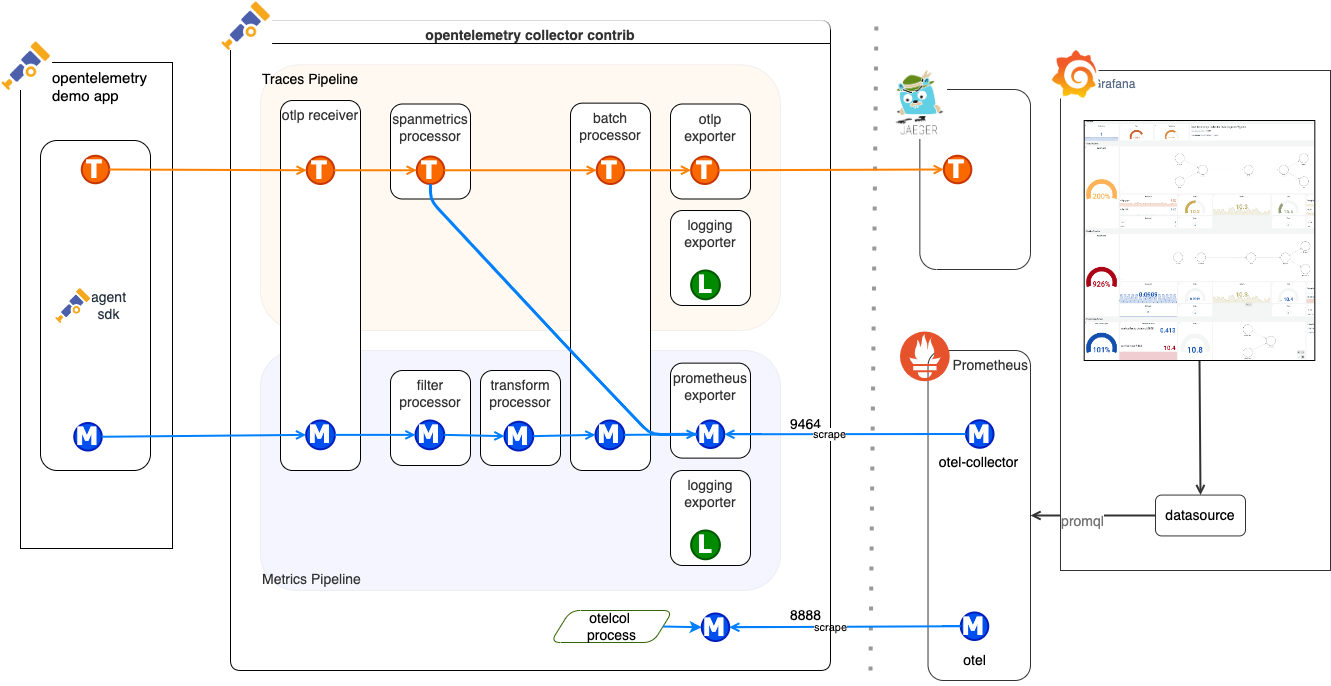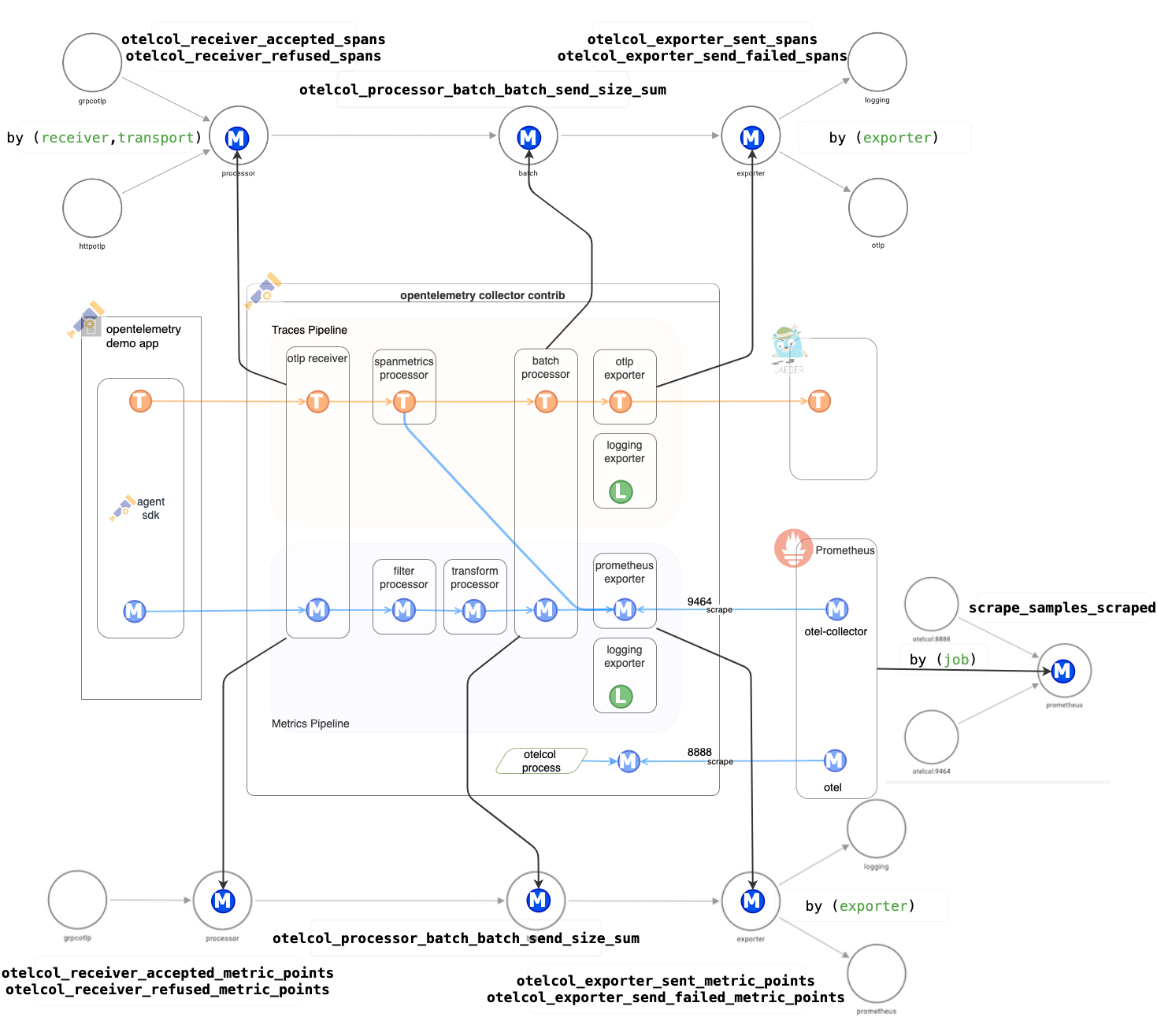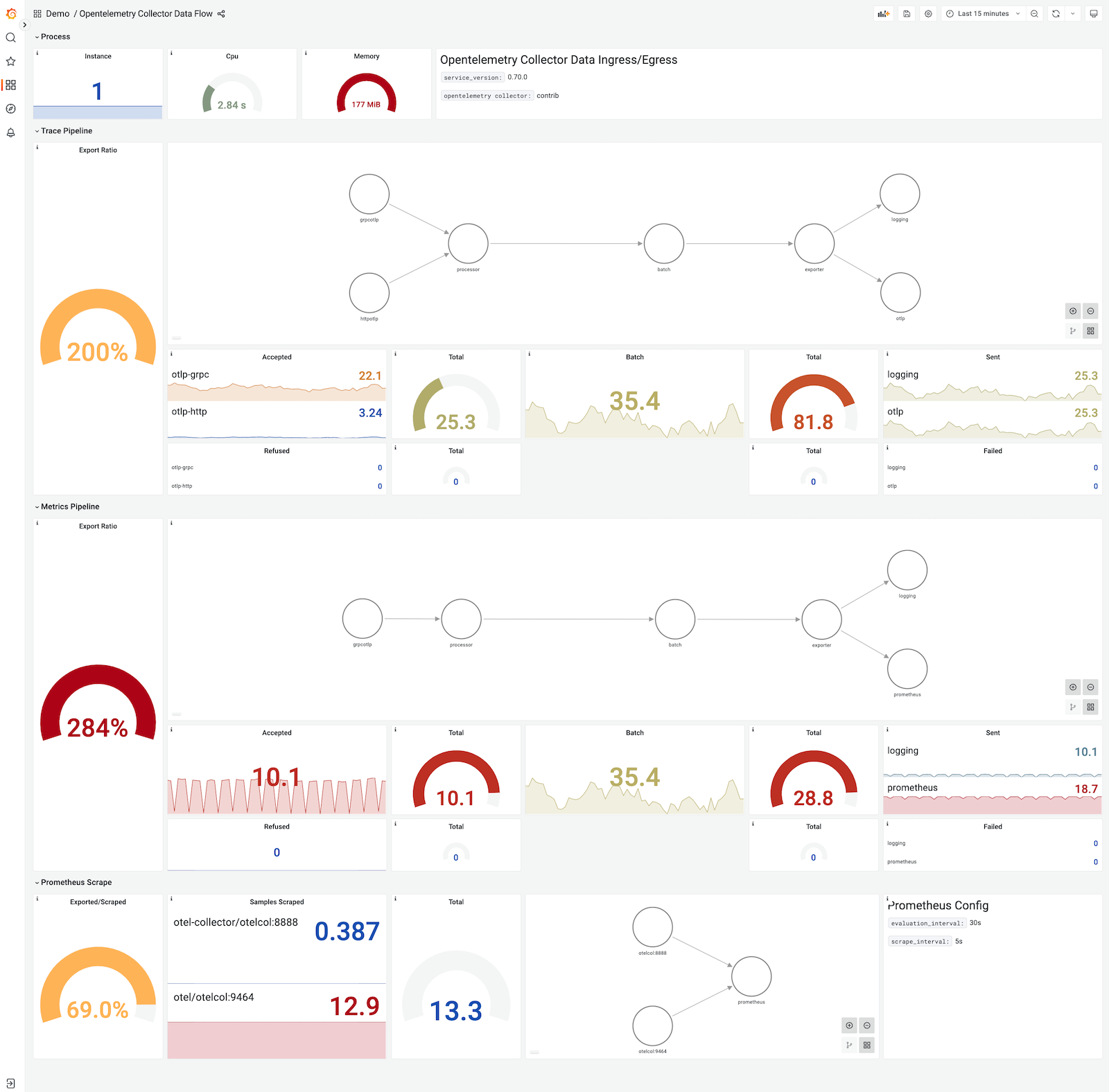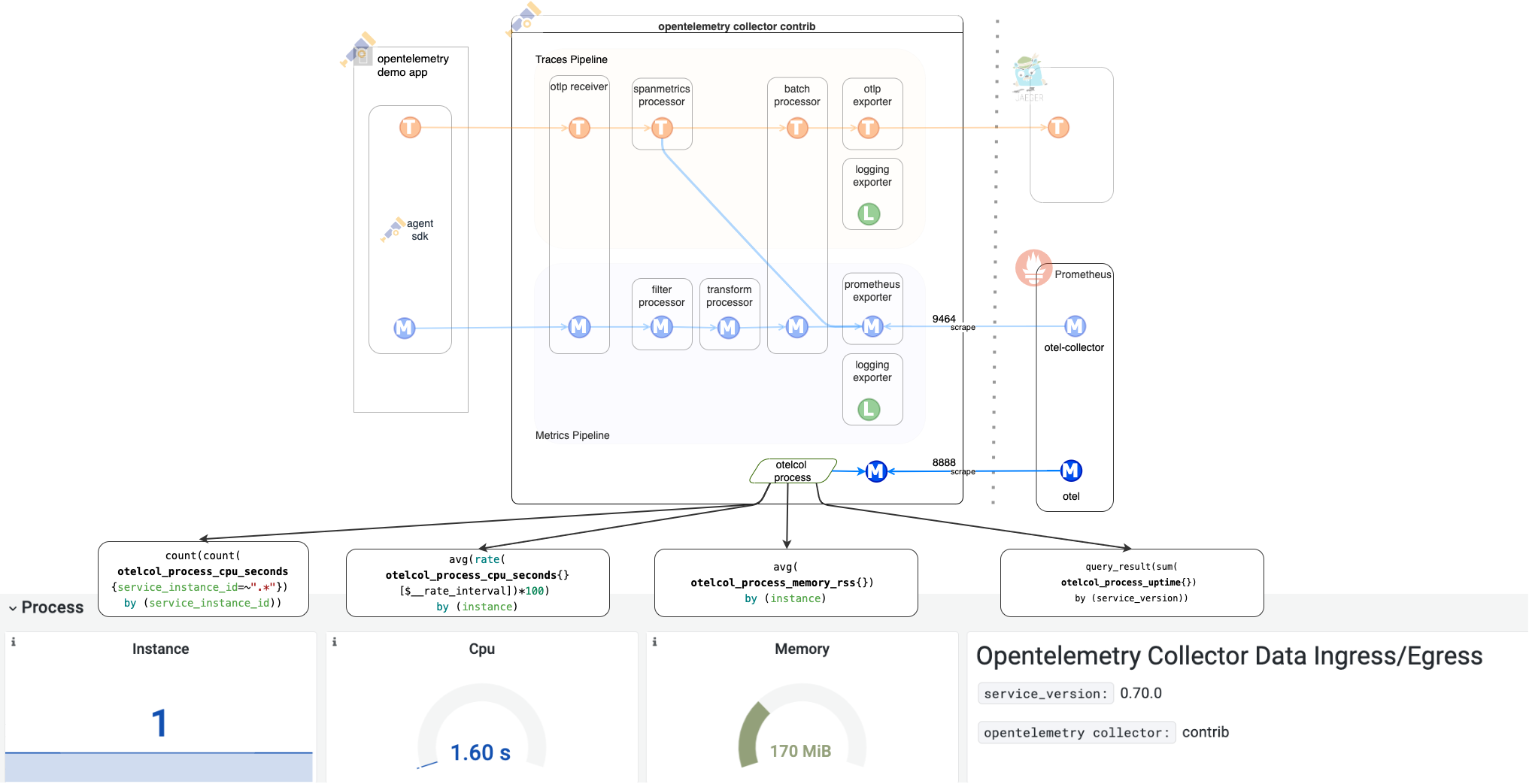コレクターデータフローダッシュボード
OpenTelemetryコレクターを通じてデータフローを監視することは、いくつかの重要な理由があります。サンプル数やカーディナリティなど、入力されるデータのマクロレベルの視点を得ることは、コレクターの内部動作を理解する上で不可欠です。しかし、詳細に踏み込むと、相互接続が複雑になる可能性があります。コレクターデータフローダッシュボードは、OpenTelemetryデモアプリケーションの機能を示すことを目的としており、ユーザーが構築するための基盤を提供します。
コレクターデータフローダッシュボードは、監視すべきメトリクスについて重要なガイダンスを提供します。ユーザーは、memory_delimiterプロセッサーやその他のデータフロー指標など、自身のユースケースに合わせた必要なメトリクスを追加することで、独自のダッシュボードを作成できます。デモダッシュボードは出発点として機能し、ユーザーが多様な利用シナリオを探索し、独自の監視ニーズに合わせてツールを適応させることを可能にします。
データフローの概要
以下の図は、システムコンポーネントの概要を示しており、OpenTelemetryデモアプリケーションで使用されているOpenTelemetryコレクター(otelcol)設定ファイルから導き出された構成を示しています。さらに、システム内のオブザーバビリティデータ(トレースとメトリクス)の流れを強調しています。

イングレスとエグレスのメトリクス
以下の図に示されているメトリクスは、イングレスとエグレスの両方のデータフローを監視するために使用されています。これらのメトリクスはotelcolプロセスによって生成され、ポート8888でエクスポートされ、その後Prometheusによってスクレイピングされます。これらのメトリクスに関連するネームスペースは “otelcol” であり、ジョブ名は otel とラベル付けされています。

ラベルは、特定のメトリクスセット(エクスポーター、レシーバー、またはジョブなど)を識別するための有用なツールとして機能し、ネームスペース全体の中からメトリクスセットを区別できるようにします。重要な点として、memory_delimiterプロセッサーで定義されているメモリ制限を超えた場合にのみ、拒否された(refused)メトリクスに遭遇することになります。
トレースパイプラインのイングレスに関するメトリクス
otelcol_receiver_accepted_spansotelcol_receiver_refused_spansby (receiver,transport)
メトリクスパイプラインのイングレスに関するメトリクス
otelcol_receiver_accepted_metric_pointsotelcol_receiver_refused_metric_pointsby (receiver,transport)
プロセッサーに関するメトリクス
現在、デモアプリケーションに存在する唯一のプロセッサーはバッチプロセッサーであり、これはトレースとメトリクスの両方のパイプラインで使用されています。
otelcol_processor_batch_batch_send_size_sum
トレースパイプラインのエグレスに関するメトリクス
otelcol_exporter_sent_spansotelcol_exporter_send_failed_spansby (exporter)
メトリクスパイプラインのエグレスに関するメトリクス
otelcol_exporter_sent_metric_pointsotelcol_exporter_send_failed_metric_pointsby (exporter)
Prometheusのスクレイピングに関するメトリクス
scrape_samples_scrapedby (job)
ダッシュボード
Grafana UIにアクセスし、画面左側のブラウズアイコンからOpenTelemetry Collector ダッシュボードを選択することで、ダッシュボードにアクセスできます。

ダッシュボードは4つのセクションから構成されています。
- プロセスメトリクス
- トレースパイプライン
- メトリクスパイプライン
- Prometheusスクレイピング
セクション 2, 3, 4 は上述のメトリクスを使用してデータフロー全体を示しています。さらに、データフローを理解するために、各パイプラインのエクスポート比率が計算されています。
エクスポート比率
エクスポート比率は、基本的にレシーバーメトリクスとエクスポーターメトリクスの比率です。上記のダッシュボードのスクリーンショットで、メトリクスのエクスポート比率が受信したメトリクスよりもはるかに高いことに気づくでしょう。これは、デモアプリケーションがスパンメトリクスを生成するように設定されているためです。スパンメトリクスは、概要図に示されているように、コレクター内のスパンからメトリクスを生成するプロセッサーです。
プロセスメトリクス
非常に限定的ではありますが、有益なプロセスメトリクスがダッシュボードに追加されています。たとえば、再起動時やそれに類似した状況で、システム上で1を超える数のotelcolインスタンスが実行されているのを観測することがあるかもしれません。これは、データフローのスパイクを理解する際に役立つ可能性があります。

フィードバック
このページは役に立ちましたか?
Thank you. Your feedback is appreciated!
Please let us know how we can improve this page. Your feedback is appreciated!